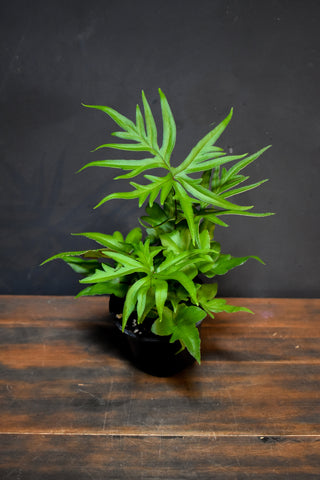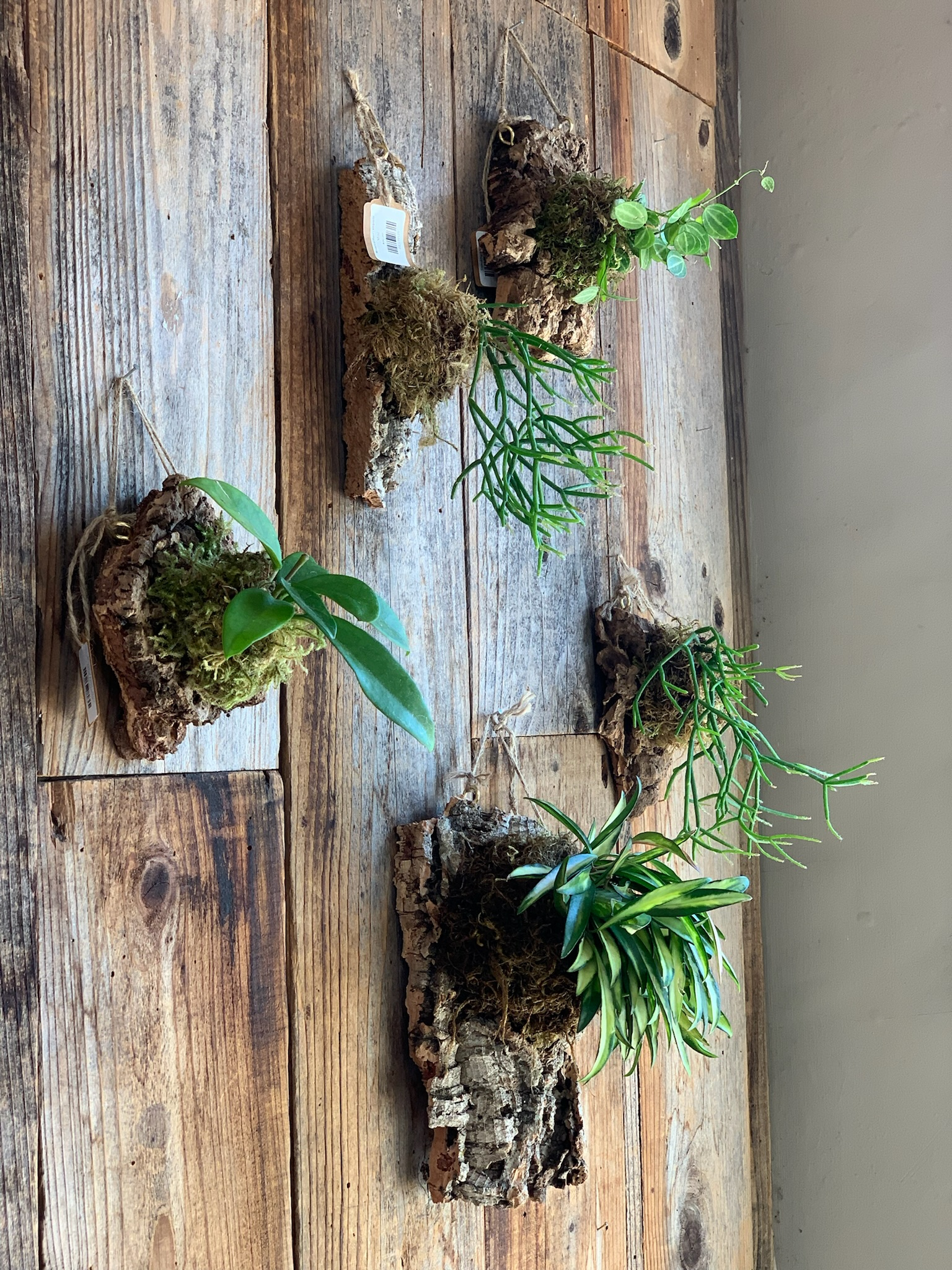Ferns -- so delicate, so beautiful, so difficult. If you’ve attempted to care for a fern and come home one day to a crispy leaf pile, you’re not alone. Luckily, we have tips for you!

About Ferns
Ferns are among the oldest plants, thriving in various climates worldwide. With over 12,000 species, they range from miniatures to towering trees.
Most ferns prefer shady, moist conditions and are low maintenance, with few pests or diseases.
WATER
The biggest secret to caring for ferns? Water. Commit to checking your fern on a schedule, or put it somewhere you won’t forget it like by the bathroom or kitchen sink, or on your dresser. Treat it like a pet. If you’re feeding your dog or cat, you probably need to check on your fern.
You want to water your fern whenever the top of the soil feels dry. Unlike many plants, which like to dry out a bit, the fern doesn't want to dry out more than an inch or two. There are some ferns that can tolerate longer periods without being watered, check your specific fern variety for more detail.
When watering your fern make sure to water thoroughly until water runs out the bottom of the pot. You don't want the pot or the roots to stay sitting in water for extended periods of time.

Humidity
Ferns love humidity. We recommend keeping your fern on a pebble tray to increase the humidity around it. Select a generous saucer, fill in with rocks, then place the pot on top of the rocks. Fill the tray with water. Ideally, the pot isn’t fully submerged in water. Another way to increase the humidity around your plant is to bunch plants close together.
LIGHT
Ferns typically do not want direct light at all. Ferns typically grow under the canopy, where trees shade any direct sunlight. This is one of those plants where medium light is perfect. Too little light and they’ll exist, but be thin and spindly. Too much light and they’ll burn and shrivel. Aim to put them somewhere where they can cast a gentle shadow in natural light.
VESSEL
To glaze or not to glaze... The type of pot your plant your fern in can affect how often you water your plant.
Many people recommend planting ferns and other ferns into fully glazed pots, as the glaze prevents the pot from stealing moisture from the soil and therefore the fern. It can be easier to maintain a fern in a glazed pot because the soil stays wet longer, therefore you have to water less.
Ferns can definitely survive in an unglazed pot, but will require much more frequent attention. If keeping a fern in an unglazed clay pot, I highly recommend soaking the whole pot when you repot it, and keeping a pebble tray full at all times.Either route is acceptable, but a glazed pot may make your life a little easier.
Ferns are a good candidate for self-watering pots, as these pots help keep the soil evenly moist - which is what ferns love!
Our Favorite Ferns

Digit Fern
Doryopteris Pedata "Digit Fern" is a rare and beautiful clumping fern displaying unusual, palmate shaped fronds with black petioles.

Eyelash Fern
The Eyelash Fern is a small, tropical fern producing very pretty, palm-like fronds on a diminutive scale it remains compact, reaching a maximum height of 6-8 inches tall. This fern loves a warm, humid environment, making it perfect for terrariums!

Staghorn Fern
Staghorns are visually striking specimens that get their name from their antler-like fronds that jut out from their crest. These fascinating weirdos are epiphytes, meaning they grow on the surface and in the nooks of trees in the wild and absorb most of their nutrients through their fronds. This habit makes them a perfect candidate for mounting and kokedama.
These ferns are one of the varieties that prefer their soil to dry out a little bit in between waterings.

Rabbit's Foot Fern
We love the Rabbit's Foot Fern here at Crimson because of their creepy-crawly tarantula-like rhizomes and lacey fronds. This furry little friend is among the easier fern varieties to care for and works great both as a table top eye-catcher, or hung up high to allow its rhizomes to trail and take center stage.
SHOP ALL FERNS










Leave a comment